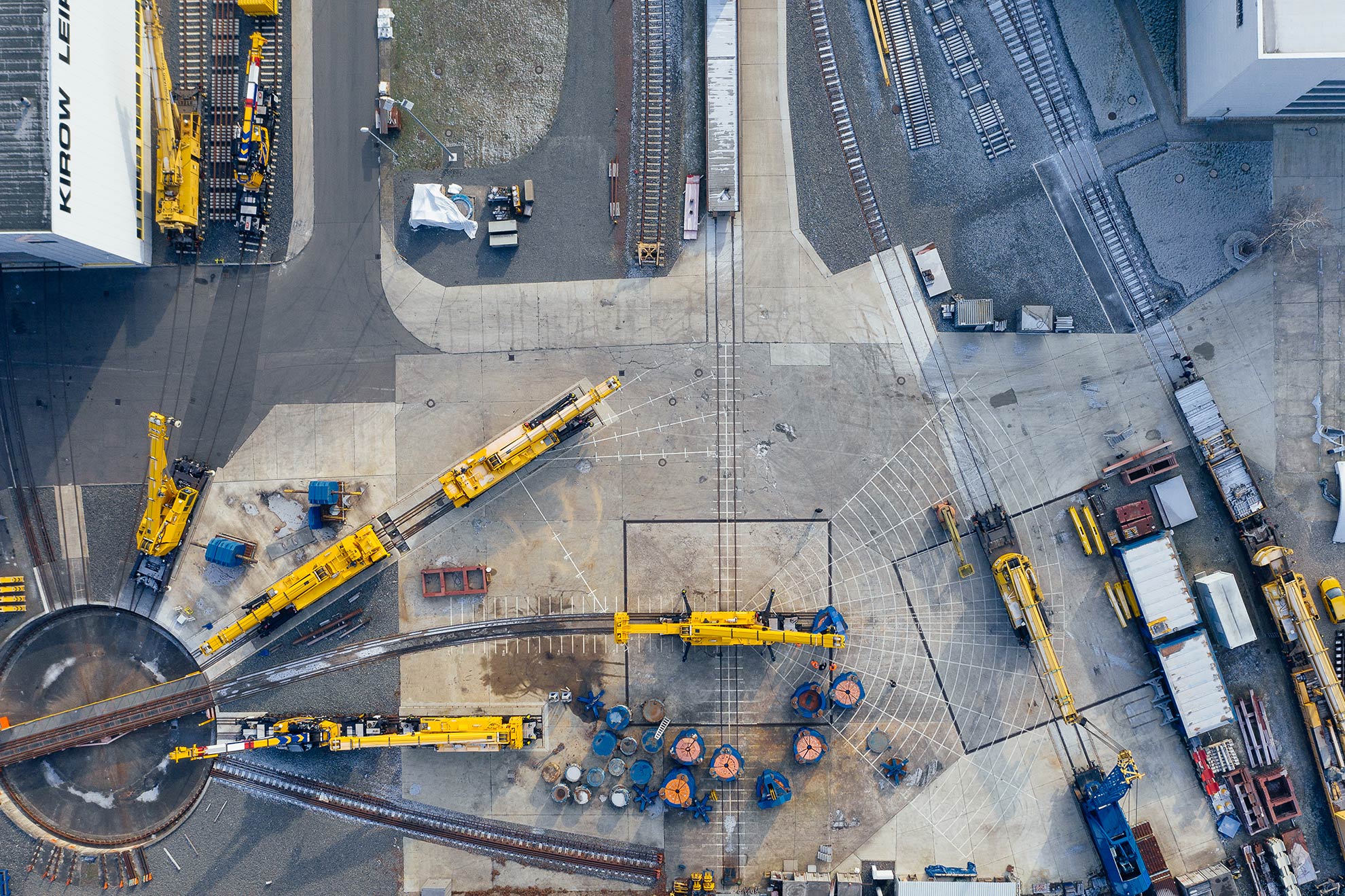FOUR RAILWAY CRANES FOR BANGLADESH
09.10.2019
The word Bangladesh is an amalgamation of Bangla (Bengali) and Desh (country). In terms of population, the “Bengali country” is the eighth largest country in the world with around 165 million inhabitants – however, it is only 92nd in terms of surface area. The capital, Dhaka, is one of the fastest growing megacities in the world. Bangladesh occupies the eastern part of the Bengal region, whereas the western part of the region forms the Indian state of West Bengal. While the border that was drawn between Bangladesh and India during the division of 1947 was designed in accordance with the religious majorities of Hindus and Muslims, a natural border runs through the middle of Bangladesh. At 3,100 kilometres, the Brahmaputra is one of the longest rivers on earth and the most abundant in Asia. Its source is located in Tibet, where the river bears the name Matsang. The most important road and railway bridge over this river in Bangladesh is the 4.8-km-long Jamuna Bridge, which was only opened in 1998. The railway, built by the British during colonial times, has a gauge of 1,676 mm (5 ½ feet) west of Brahmaputra and 1,000 millimetres east of Brahmaputra. The 1,000 millimetres network then continues into the eastern neighbouring country of Myanmar. In 2012, Kirow supplied one railway crane each for both networks – a KRC 800 N for the narrow gauge and a KRC 1500 B for the broad gauge. The order included delivery to the Bangladesh Railways depot. However, since Bangladesh has only one deep-sea port at Chittagong, both cranes were delivered there. Chittagong lies east of the Brahmaputra and accordingly only has 1,000 millimetres narrow gauge tracks. The broad-gauge crane was therefore transported in two parts by road over the Jamuna Bridge to the Parbatipur Workshop, where it was finally assembled. It became apparent that the vehicles used were too small for a bridge crossing and larger transporters were not initially available. The skilled German-Indian service team was able to routinely compensate for the resultant delay. As early as 2015, the customer was highly satisfied with the performance of the two cranes and applied for funding for the further renewal of its crane fleet. For Bangladesh Railways there was no debate as to whether Kirow cranes would be ordered again next time. The invitation to tender was issued in 2017, whereupon Kirow was the only supplier to be audited in detail and ultimately approved by the financier Asian Development Bank (ADB) within the context of ensuring fair competition. The order now totalled four cranes (two one-metre gauge and two broad- gauge). The challenges involved in their overland transport had thus doubled. This time, the bridge crossing did not present a problem, although the very sight of the transport vehicles would have given any German TÜV vehicle examiner a heart attack. The cranes arrived at their destination undamaged and on time. All that now remained was the arrival of the corresponding match wagons, which were being manufactured in neighbouring India. However, this turned out to be another challenge altogether – an even more difficult one. The journey from Kolkata/India to Parbatipur/Bangladesh initially ran smoothly as far as the border. Then a lengthy and nerve-wracking export process – and an even more difficult import process – began. The delay lasted for three months, during which the wagons were stuck at the border and the finished cranes could not be used on the designated line section. However, everything is now finally in place and everyone involved richer for the experience. Once again, Kirow has proven its ability to fulfil contracts even under the most challenging conditions. This positive outcome was the result of the harmonious interaction between the respective managers at the end customer, the local representative office, the logistics companies involved, the German-Indian service team and our in-house contract managing department. The renewal of the crane fleet in Bangladesh is not yet complete and gives us hope of new adventures. The management at Bangladesh Railways is convinced by the outstanding performance and reliability of the Kirow cranes, which can be attributed to the company‘s targeted product development and high-quality manufacturing. High load capacities, low clearance gauges and low axle loads – these were the parameters for the development of the two quite different crane classes for a country with two different railway networks. Today, Kirow cranes are deployed east and west of the great Brahmaputra river. The name Brahmaputra comes from the ancient Indian language Sanskrit and means son of Brama, the creator god. In Hinduism today, Vishnu (the preserver) and Shiva (the destroyer) are frequently worshipped. Brahma hardly plays a role, since he has already completed his tasks...which is why we all find ourselves in the present day and age.

